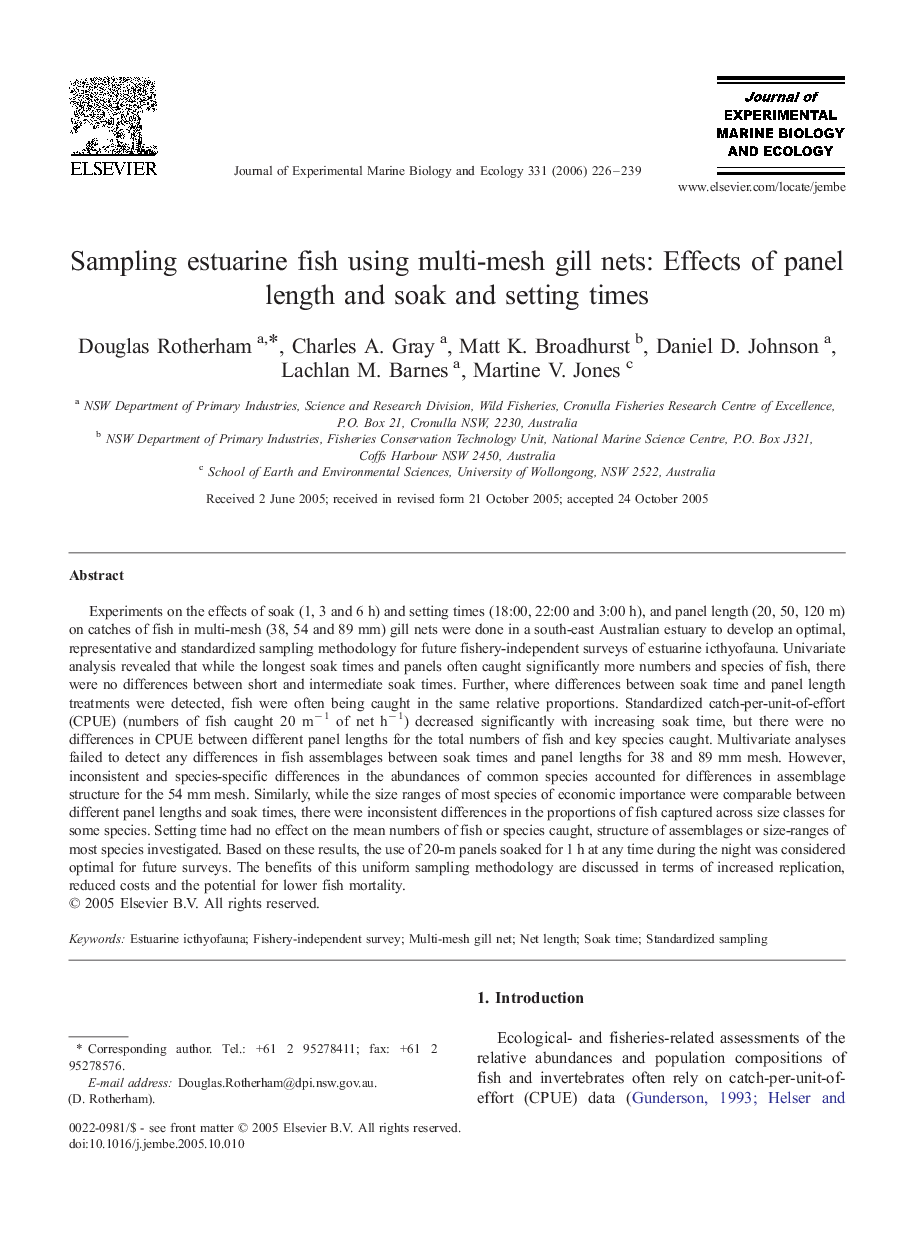| Article ID | Journal | Published Year | Pages | File Type |
|---|---|---|---|---|
| 4398170 | Journal of Experimental Marine Biology and Ecology | 2006 | 14 Pages |
Experiments on the effects of soak (1, 3 and 6 h) and setting times (18:00, 22:00 and 3:00 h), and panel length (20, 50, 120 m) on catches of fish in multi-mesh (38, 54 and 89 mm) gill nets were done in a south-east Australian estuary to develop an optimal, representative and standardized sampling methodology for future fishery-independent surveys of estuarine icthyofauna. Univariate analysis revealed that while the longest soak times and panels often caught significantly more numbers and species of fish, there were no differences between short and intermediate soak times. Further, where differences between soak time and panel length treatments were detected, fish were often being caught in the same relative proportions. Standardized catch-per-unit-of-effort (CPUE) (numbers of fish caught 20 m− 1 of net h− 1) decreased significantly with increasing soak time, but there were no differences in CPUE between different panel lengths for the total numbers of fish and key species caught. Multivariate analyses failed to detect any differences in fish assemblages between soak times and panel lengths for 38 and 89 mm mesh. However, inconsistent and species-specific differences in the abundances of common species accounted for differences in assemblage structure for the 54 mm mesh. Similarly, while the size ranges of most species of economic importance were comparable between different panel lengths and soak times, there were inconsistent differences in the proportions of fish captured across size classes for some species. Setting time had no effect on the mean numbers of fish or species caught, structure of assemblages or size-ranges of most species investigated. Based on these results, the use of 20-m panels soaked for 1 h at any time during the night was considered optimal for future surveys. The benefits of this uniform sampling methodology are discussed in terms of increased replication, reduced costs and the potential for lower fish mortality.
